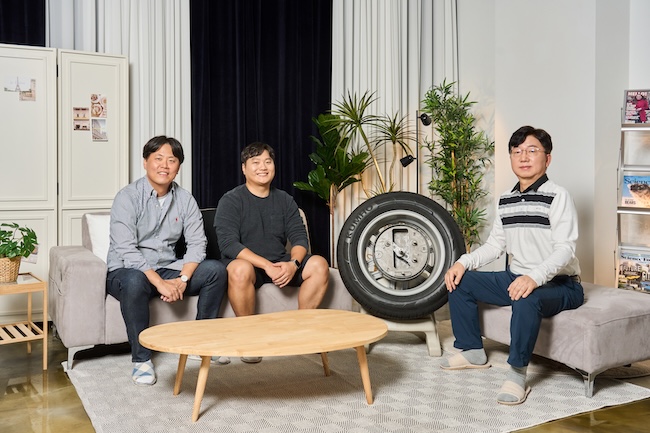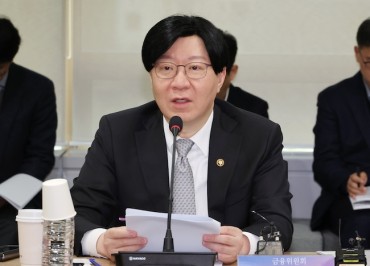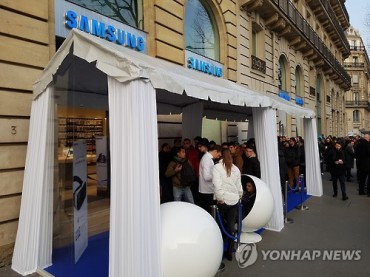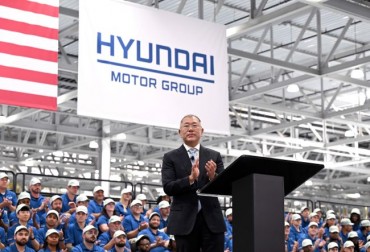
Hyundai and Kia have revealed a new drive system that integrates essential vehicle components within the wheel. (Image courtesy of Hyundai and Kia)
SEOUL, Nov. 29 (Korea Bizwire) – In a groundbreaking reveal that is expected to herald a complete paradigm shift in vehicle propulsion, Hyundai and Kia have revealed a new drive system that integrates essential vehicle components within the wheel.
This innovation liberates the space between the wheels, allowing for the implementation of novel designs or the addition of batteries to enhance driving range, and is expected to bring revolutionary changes to the mobility landscape, as envisioned by Hyundai and Kia.
The two automakers presented the ‘Universal Wheel Drive System’ (referred to as Uniwheel) at the ‘Uniwheel Tech Day’ held in Myeongdong, Seoul on November 28.
Uniwheel introduces an entirely new structural design for a drive system. Traditionally, the space occupied by components like the engine, transmission, drive shaft, and constant-velocity (CV) joint in the history of automotive development has been an immutable area beyond modification by any car manufacturer.
Even in the era of electric vehicles (EVs), where the engine is replaced by a motor and the transmission by a reducer, the overall drive system has remained consistent.
The Uniwheel disrupts this norm by integrating the functions of the reducer, drive shaft, and CV joint from the conventional EV drive system into the wheel. Furthermore, it situates the motor close to the wheel, creating a novel structure.
Hyundai and Kia emphasize that the Uniwheel not only liberates space previously occupied by conventional components but also improves vehicle ride comfort and durability, heralding it as a technological ‘game-changer’ in the era of electrification.
In contrast to the traditional CV joint-equipped drive shaft, which experiences reduced power efficiency and durability as the angle of bending increases with the wheel’s vertical and horizontal movements, the Uniwheel maintains consistent power transmission efficiency under any movement, ensuring both vehicle durability and ride comfort.
The key to this capability lies in the Uniwheel’s planetary gear structure and multi-link mechanism design. The Uniwheel comprises a planetary gear structure with a centrally located sun gear, four pinion gears on both sides, and an outer ring gear.
The sun gear rotates at the center, akin to the sun’s rotation, surrounded by pinion gears, with the outermost layer consisting of the ring gear. When the power generated by the motor is transmitted to the sun gear, the pinion gears mesh to rotate the ring gear, which is ultimately connected to the wheel, transmitting power to it.
Additionally, the Uniwheel’s pinion gears are designed with a multi-link mechanism consisting of two linkages, allowing for smooth vertical and horizontal movement.
By merging these two structures, the Uniwheel effectively transmits power from the motor to the wheel while responding freely to the wheel’s movements on different surfaces.
Moreover, the Uniwheel replaces the role of the reducer in electric vehicles, slowing down the rotation generated by the motor to provide high torque to the wheel.
Hyundai and Kia are currently developing a Uniwheel with an increased gear ratio to achieve high torque even with a small motor. This will enable the independent control of the driving power of up to four wheels with small motors, resulting in superior steering, driving stability, and torque vectoring (the precise control of torque for each wheel).
The automakers envision utilizing the Uniwheel to make use of previously unusable spaces in various ways. The liberated space can serve as additional cargo space in the trunk and front, enabling new designs that move away from the traditional driver-centered seat arrangement.
Incorporating additional batteries can dramatically improve driving range, and the Uniwheel facilitates the design of purpose-based vehicles (PBV) according to customer needs.
The Uniwheel is adaptable to various sizes, making it suitable for all types of electric vehicles, including standard sedans and high-performance EVs, as well as other mobility devices like wheelchairs, bicycles, and robots.
Hyundai and Kia are committed to further refining the Uniwheel by adjusting the gear ratio and improving the lubrication cooling system to increase its marketability.
“This is an innovative idea that can be a game-changer in the future mobility market,” said Park Jong-sool, a senior researcher at the Hyundai and Kia Research and Development Center, emphasizing Hyundai’s dedication to elevating the perfection of the technology for customers to experience mobility in an entirely different way.
Kevin Lee (kevinlee@koreabizwire.com)






